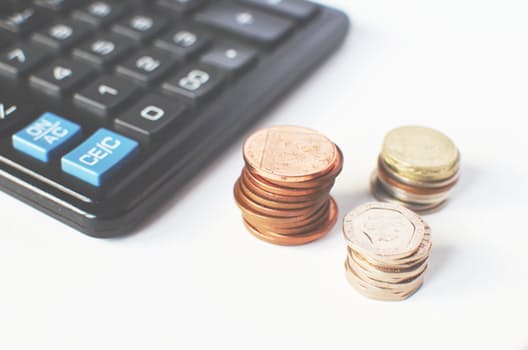Guide to Refinancing a Home (Top Mortgage Refinance Tips)
Many homeowners would love to pay less on their home mortgage than they are paying right now. This is why so many people turn to a mortgage refinance.
However, the process of refinancing a home is not a walk in the park. How does one even go about refinancing a mortgage?
This article will help you through the whole process. We will discuss the why behind home loan refinance, touch on how to refinance home loan mortgages, and show you the refinance interest rates today.
Most importantly, we will offer 8 tips to getting the best refinance rates today. We will show you how taking the time to check things, like your credit score, can give you the best refinance mortgage rates and may end up saving you from mortgage refinance disaster.
If you find yourself asking, “Should I refinance my mortgage?” then this article is for you!
See Also: Getting an Interest Only Mortgage this year? What You Need to Know
Reasons for Refinancing a Mortgage
If getting a mortgage refinance is such a hassle, there must be certain benefits coming out of the entire process. Here are a few of the main reasons people go through the work of refinancing a home:
- Receive a better interest rate and save money
- Get a better term length for the length of the mortgage and pay less interest
- Partner with a better mortgage company
- Refinance with cash out (to pay for big purchases or home improvements, pay off debt, etc.)
- Get rid of private mortgage insurance
- Switch to an adjustable-rate mortgage instead of a fixed-rate mortgage
Of course, there can be other reasons to refinance your home or refinance with cash out, but these are the most common reasons. Your unique situation may also require refinancing a mortgage, so read on to learn more.
How to Refinance a Home Mortgage
Essentially, when you are refinancing a home, you are paying off the first mortgage loan by creating an entirely new mortgage loan under different terms. Maybe those new terms include a lower interest rate or perhaps they let you drop private mortgage insurance, etc.



Image source: Pexels
The simplified version of the home loan refinance process involves:
- Understanding your goals (look at the list above or define your own personal, unique financial goal)
- Appraising your home
- Shopping for the best home refinance rate
- Working through all the paperwork
- Locking in your new rate
- Paying all the fees
Of course, the process of refinancing a mortgage is complicated and delicate – it greatly affects your finances for many years to come. So, it is wise to also consult the help of a financial advisor.
Don’t Miss: Guaranteed Rate Reviews – What You Need to Know! (Mortgage, Complaints & Review)
All-in-One Change Management Tools
Top Rated Toolkit for Change Managers.
Get Your Change Management Tool Today...
8 Tips to Getting the Best Refinance Rates Today
If you realize that a home loan refinance is right for you, it is vitally important to do the necessary work to get the best mortgage refinance rates. We have gathered 8 concepts and ideas that you should take into consideration before beginning the process of refinancing a home.
These tips could save you considerable money in the long run. They will also help you answer the question, “Should I refinance my mortgage?”
1. Check Your Credit Score Before Refinancing a Mortgage
One of the most important rules to remember is that refinancing a home is not necessarily a good idea for every homeowner, but it is a great idea for the right homeowner. One way to know if mortgage refinance is for you is to know your credit score and/or try to improve it.
In the same exact way your credit score played a major role in determining your initial mortgage rate, it also has a large impact on refinancing a mortgage.
Banks need to trust that their loan will be paid back. If you have a low credit score, they need more “insurance” so to speak. So, they will often require a higher interest rate. If this is the case, you may not save any money at all by going through a home refinance.
If you have a great credit score, that is wonderful! Move on to the other steps. If you have a poor credit score, try improving it before refinancing a mortgage to get the best rate.
Related: How to Buy a House with No Money Down | Guide | Buying a Home with No Down Payment
2. Pay Close Attention to the Refinance Interest Rates Today
Simply because you want to start refinancing a mortgage does not mean the interest rates are conducive to a home refinance at this time. Make sure you are aware of the refinance interest rates today.
Of course, the refinance rate for refinance mortgage costs changes daily and even depends on the area of the country you live in. Keeping an eye on what the rates look like on a daily basis is an important step in getting the best refinance rates today.
Here are a few websites you can check when you want to start refinancing a home. Some offer a comprehensive view of different rates; others show you their particular current home refinance rate.
3. Choose a Shorter Refinance Mortgage Term
It may look really appealing to choose yet another long-term mortgage life (say 20 or 30 years) as long as the interest rate is extremely low. However, don’t be fooled by this “Refinance Mortgage Mistake #1.”
If you extend your mortgage term, even with a lower interest rate, you could easily find yourself paying more in the long run. Remember, 30 years of paying toward interest every single month, even “low” interest, adds up.
The best way to avoid this is to shorten up your loan term when refinancing a mortgage. Paying interest for a shorter time is definitely one of the top ways to get the best mortgage refinance rate.
If you are about to refinance home mortgage rates to a longer term agreement, make sure to double-check the math and even consult your financial advisor to ensure you will be saving money while refinancing a home – not losing money.



4. Look into Government Home Refinance Programs
The government wants to help responsible homeowners refinance home loan mortgages. The Home Affordable Refinance Program (HARP) helps homeowners in refinancing a mortgage under two important conditions:
- The homeowner has remained current on paying their mortgage
- The mortgage is owned by Fannie Mae or Freddie Mac
HARP gives homeowners a low interest rate and a shorter loan term. This is also a great option for those refinancing a home to switch from an adjustable rate to a fixed rate.
HARP’s website outlines all the eligibility requirements for this particular way of refinancing a home.
Popular Article: How to Get a Home Equity Loan with Bad Credit (What You Need to Know)
5. Research Multiple Mortgage Refinance Lenders
Not all lenders will offer you a home refinance that will actually benefit you. Sure, you may get the best deal for sticking with your current lender, but you definitely want to shop around to get the best rate
You are not just looking for the lowest interest for refinancing a mortgage here – you are looking for a comprehensively low rate. Lower terms, lower closing costs, lower fees, etc. as well as customer satisfaction and integrity.
Here are a few resources to help you search for a home loan refinance lender:
- Top Ten Reviews: “Best Mortgage Refinancing Lenders of 2016”
- Bank Rate: Daily mortgage rates in your area
- Consumer Affairs: “Best Mortgage Companies for 2016”
6. Increase Your Home’s Value
It is important to understand how refinancing a home works and why an increased home value makes a difference. It’s all about the LTV, or loan-to-value ratio. Below is how it works. We will use simple numbers to make it easier.
Your home is worth $100,000. You put down $10,000 and finance the rest. This means your loan-to-value ratio is 90%. In other words, your loan is totaling 90% of the home’s value. Then, say the market has been good and your home could sell for a bit more, plus you’ve added a pool and updated the kitchen.
Now your home is worth $120,000. Your loan-to-value ratio goes way down. A lower LTV ratio will most likely give you a much better home refinance rate. Similarly, if your home has lost value, refinancing a mortgage may not save you money in the long run.
Check to see if your home’s value has gone up or down by researching what homes similar to yours are selling for in your area. Also, talk to you financial to see if any improvements would help increase your home’s value as well.









7. Pay the Closing Costs or Move
Your home refinance comes with closing costs, just like your initial mortgage did. Dealing with these closing costs the proper way can help you improve your overall mortgage refinance rates.
It is possible, at times, to waive the closing costs and negotiate a slightly higher mortgage refinance interest rate.
This makes sense for people refinancing a home who will not stay in the home very long, as long as the new rate is still lower than the original interest rate. This way, you will not lose thousands in closing costs for a house you don’t plan on keeping.
If you do plan on staying in your home for the long haul, you should go ahead and pay your closing costs up front after refinancing a mortgage. The lower interest rate will almost always end up saving you more in the long run.



Image source: Pexels
8. Understand the Potential Fees of a Home Refinance
The process of a home loan refinance takes quite a bit of money. Even if you find the best refinance home loan rates currently out there, you may still be losing in the end if the cost of refinancing a home outweighs the money saved throughout the years.
Unless you can get a wildly good home loan refinance deal that brings your costs down considerably, it may be better to avoid refinancing a home due to all of the involved fees.
These fees could include:
- Application fees
- Recording fees
- Lawyer fees
- And more
For a comprehensive look at some of the fees you could encounter when refinancing a home, look at Trulia’s list of hidden costs.
Free Wealth & Finance Software - Get Yours Now ►
Should I Refinance My Mortgage?
At the end of the day, only you can decide if a home refinance works best for your finances. While it is a great idea to talk to mortgage specialists and financial advisors, it is very important to do the math regarding refinancing a mortgage yourself, especially if you will refinance with cash out.
After all, you are the one who will end up paying the monthly bill.
If you have taken the time to do all the research on what it takes to get a home loan refinance and have done and understood the math clearly enough to know you will be saving money in the long run, then consider using our 8 tips for getting the best refinance rates today.
Read More: How to Get Rid of PMI Mortgage Insurance | Ways to Getting Rid of PMI
AdvisoryHQ (AHQ) Disclaimer:
Reasonable efforts have been made by AdvisoryHQ to present accurate information, however all info is presented without warranty. Review AdvisoryHQ’s Terms for details. Also review each firm’s site for the most updated data, rates and info.
Note: Firms and products, including the one(s) reviewed above, may be AdvisoryHQ's affiliates. Click to view AdvisoryHQ's advertiser disclosures.



